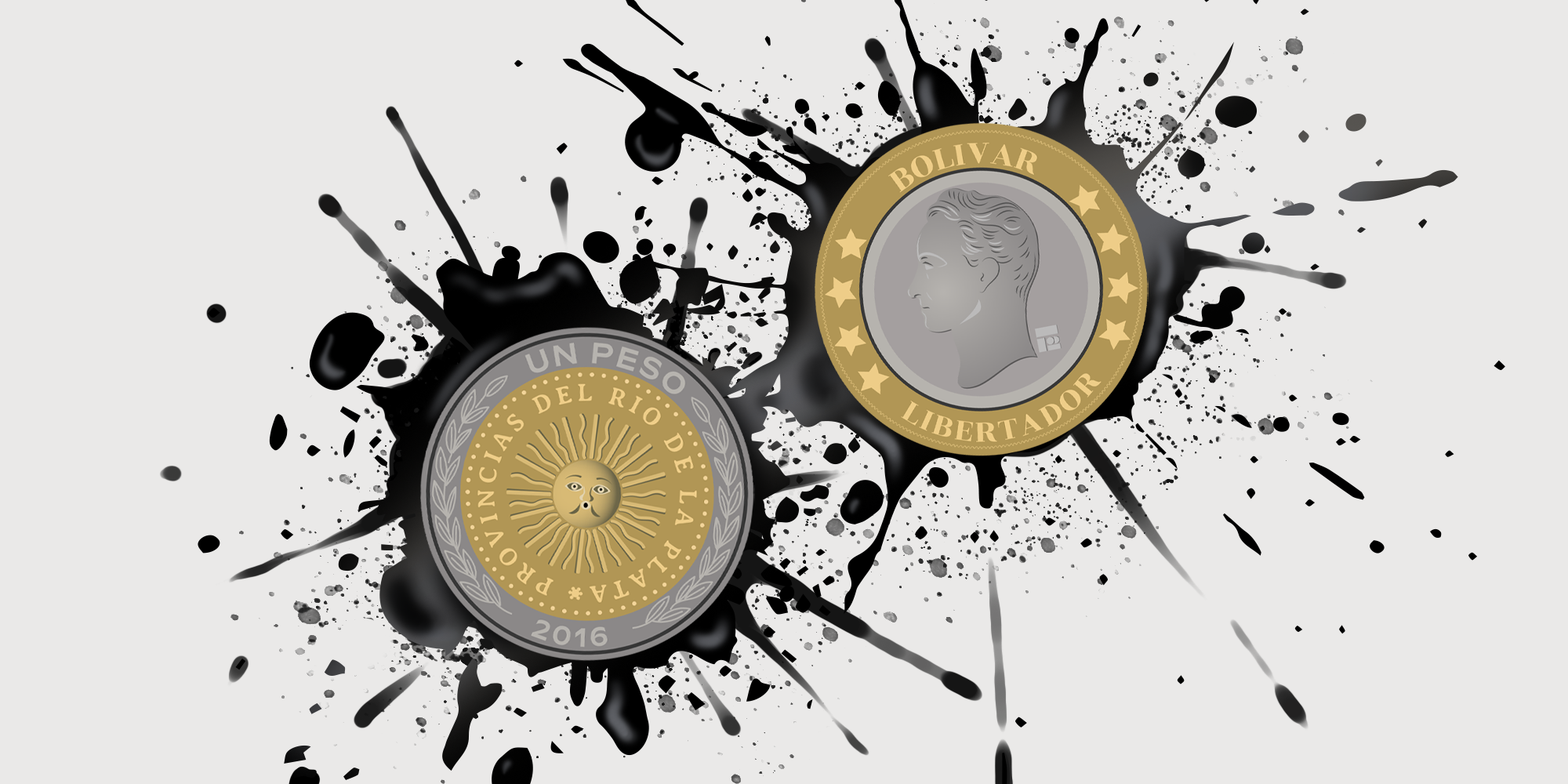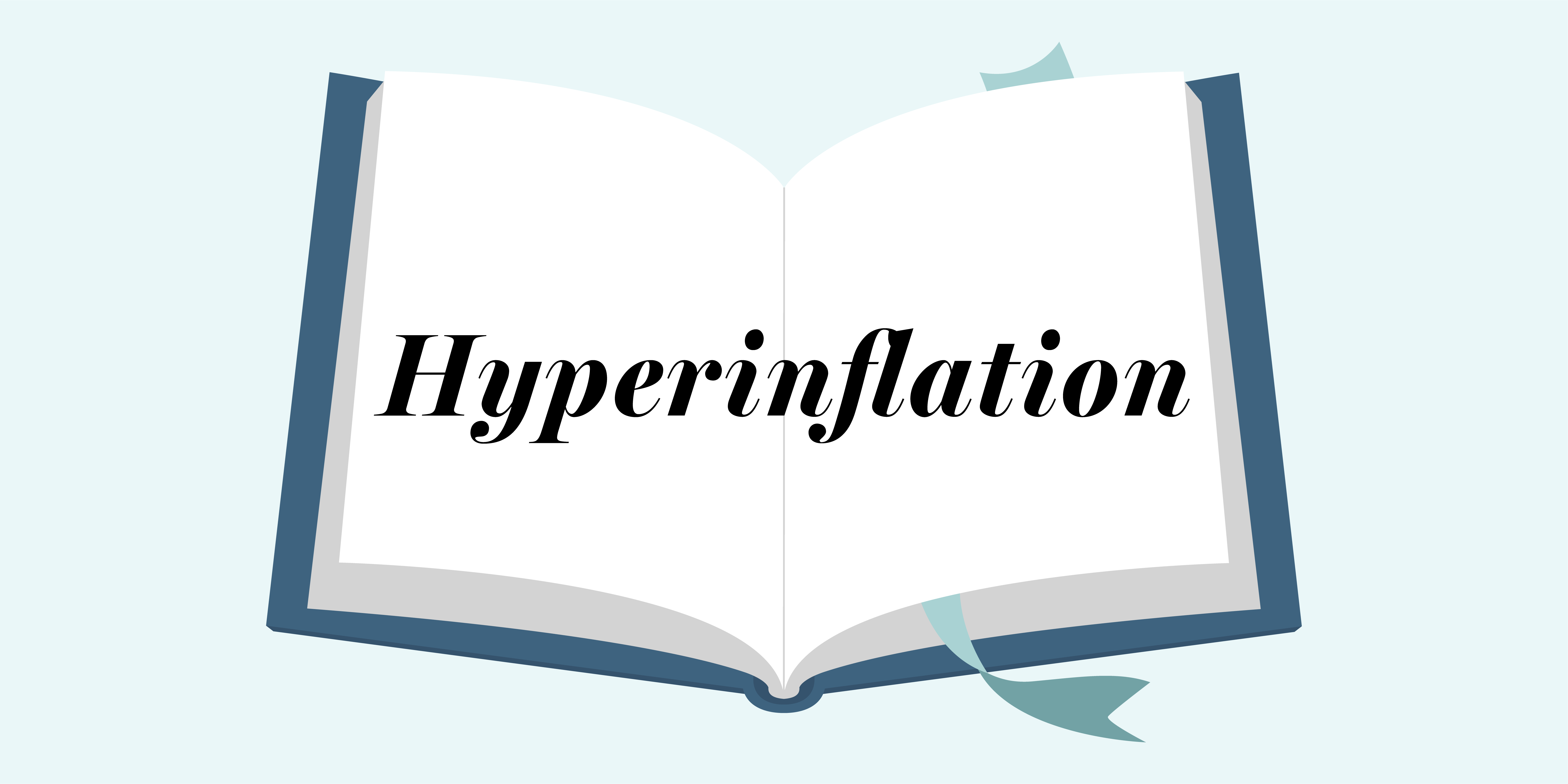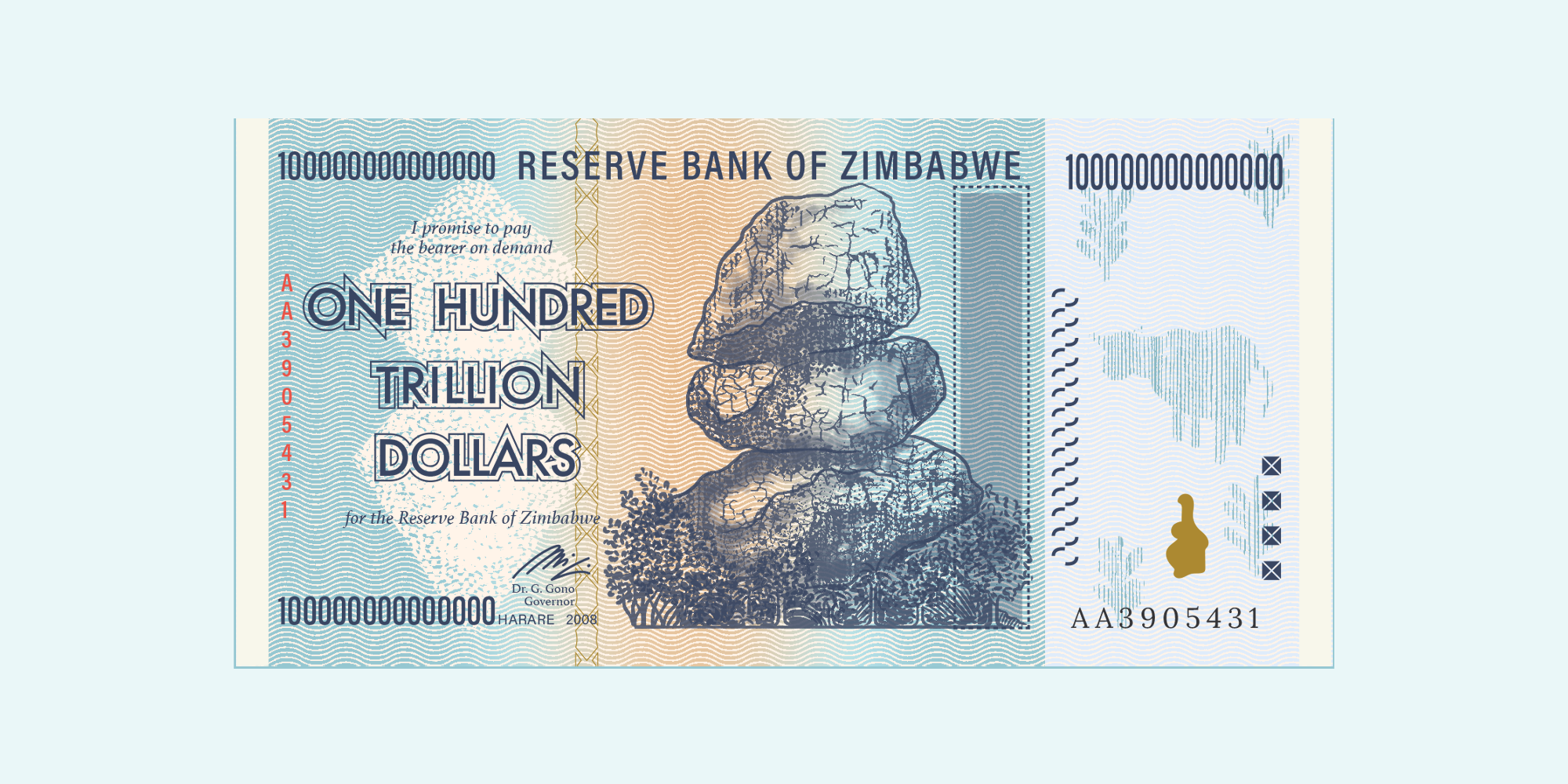Editor’s Note: This is one in a five-part series about the impact of hyperinflation around the world. Follow the series in the related content section.
Before the Great Depression in 1930, Argentina ranked amongst the 10 wealthiest nations. At the end of World War II, the Argentine peso was one of the most stable currencies in the world, alongside the British pound and U.S. dollar.
Yet since the 1950s, few countries have spent more years in recession than Argentina. What happened to this one-prosperous country to make it synonymous with economic malaise and rampant inflation?
Venezuela, with its substantial oil resources, was booming after World War I, on a sure path to long-standing economic prosperity. The oil boom of the 1920s made Venezuela the wealthiest state in Latin America, and its oil exports continued to increase sharply until 1935.
But, much like Argentina, Venezuela didn’t achieve long-lasting economic health. Instead, the nation has struggled as it vacillated between military/dictatorial control and experiments with democracy, often leaving it saddled with hyperinflation.
Perón’s profligacy
Juan Domingo Perón served as president over three different periods; first from 1946–1951, then 1952–55, and lastly from 1973–74.
The Peronist guiding principle was profligacy. Perón tripled state expenditures by 1949 and by the time he was ousted a second time, in 1955, the number of state employees had doubled.
His modus operandi was to be a spendthrift and then throw more money at problems when nothing went according to plan. Once the debt became a legitimate cause for concern, Perón would print money — stoking the inflationary fires that would eventually push Argentina into its first occurrence of hyperinflation, in 1989.
Peronism borrows from a number of ideologies, emphasizing ultranationalism, industrialization, and the political and social importance of labour, along with extensive state-supported welfare measures.
Peron’s approach – somewhere between capitalism and socialism — ended up setting the stage for decades of economic misery for the Argentine people.
His policies were so woefully unsound economically that nearly 80 years later and after four changes in Argentina’s currency, inflation can still be somewhat attributed to his actions as president.
Dutch Disease in Caracas
Dutch Disease is a rapid increase in the production of raw materials, like oil and gas, which causes a pronounced decline in other sectors of an economy.
Venezuela was a largely agrarian economy until the policies enacted in Caracas triggered huge changes in GDP composition. Under dictator Juan Vicente Gómez (1908-1935), annual oil production exploded from just over a million barrels to 137 million. Gómez died in 1935 (while in office), by which time Dutch Disease had settled in amid huge appreciation in the Venezuelan bolivar and a marked decline in agricultural production, as the price of oil steadily increased.
As income from the oil sector continued to rise — to the detriment of agriculture and other sectors — oil overtook other sectors to eventually account for more than 90 per cent of total exports.
Throughout the 1950s, the Venezuelan economy managed to grow at a healthy rate despite rampant corruption and government indifference.
Hugo Chávez was elected president in 1998 and under his leadership, Venezuela suffered one of the worst ever cases of Dutch Disease.
Central bank independence is key
This tenet of economic stability has been lacking in Argentina for a long time, and although a more recent development in Venezuela, it’s been similarly devastating.
A decree issued by the government at the request of Perón (in 1946) nationalized the central bank of Argentina and the state became its owner. This move eliminated a restriction on advancing funds to the government, meaning deficits would be funded by the central bank by creating (printing) new money.
The lack of independence of Argentina’s central bank from the government is a major problem in Argentina, and has enabled subsequent governments to run and fund enormous deficits.
For almost 50 years following its inception in 1939 the central bank of Venezuela maintained a remarkably strong currency, with inflation rates on par with many developed and prosperous nations (around 2-3%).
That was until President “Maduro made the central bank his personal minting ministry, in a country where the constitution establishes an independent central bank,” according to Venezuelan economist Francisco Monaldi, quoted on the subject in a 2016 Financial Times article. (Nicolás Maduro became interim president in 2013, following Chávez’s death. He was elected president that same year, and remains in office at the time of writing, pending an increasingly contentious election in 2024.)
Printing money is inflationary because it results in too much money chasing too few goods, which causes prices to rise.
The perils of Peronism
In Argentina, Perón’s policies triggered an inflationary spiral, with an accumulated inflation rate of nearly 300% in just six years (to the end of his first term, in 1951) — a situation so dire it earned him the dubious honour of being called an “economic gravedigger.”
His presidency ushered in fundamental changes in Argentine society that are responsible for its ongoing inflation woes.
Following Perón’s death, his second wife, Isabel Perón, succeeded him as president, until she was overthrown in a military coup in 1976 amid growing economic and political instability. The military dictatorship that ran the country from 1976-1983, ushering in a period of repression and human rights crimes that are still being investigated today, managed to handily “beat” Perón’s first-term achievement with an annual inflation rate that hit 434% in 1983. Hyperinflation became the new buzzword in Argentina.
By the time democracy was restored in 1983, inflation was rampant. The annual inflation rate reached a staggering rate of 4,924% in 1989. And then things continued to go from bad to worse under President Carlos Menem, when from 1992-99, state expenditures increased by 50%. By 2001, Argentina’s debt amounted to a whopping $160 billion, and in December of that year, the country declared bankruptcy.
Maduro’s mismanagement
Venezuela, for its part, had to contend with an unstable currency following the oil glut of the 1980s and the (first) major devaluation of the currency in 1983. Government distrust — by residents and foreigners alike — exacerbated the situation.
Inflation has been well above normal for decades, which continues to weaken the currency. It reached almost 100% in 1996, but was brought below 20% for a short time early in the 2000s. Inflation quickly picked up after Maduro, reaching hyperinflation levels again the year he was elected (2013).
Over time, Maduro plundered natural resources and drove Venezuela into economic ruin with his authoritarian rule, monumental deficit spending and money printing.
Venezuela stopped publishing standardized inflation metrics, so depending on how the new currencies and devaluations were (or weren’t) factored in, the inflation rate reached was between 100,000% and over 10,000,000% between 2018 and 2023.
The struggles are real…and ongoing
Today, while Argentina is one of Latin America’s largest economies and most stable democracies, the country continues to struggle with political dysfunction and multiple financial crises.
Nearly 40 per cent of Argentines currently live in poverty. Successive governments have enacted failed economic policies that essentially forced them to resort to printing more money, which has kept inflation higher than is healthy for any economy. When Javier Milei was elected president on Nov. 19, 2024, the country had already seen prices up 160 percent from a year before. The situation worsened after he took office in December and devalued the peso, with prices surging daily and inflation at its highest levels in three decades.
Venezuela is in the midst of a severe economic crisis, which has led to prolonged hyperinflation. Economists surmise that they’ve been experiencing hyperinflation since December 2017, and suffered the worst hyperinflation on the planet, in 2023.
Countless Venezuelans have fled the country. The domestic economy is now so weakened that remittances from abroad to remaining family members have become one of the main sources of income.
These two nations have suffered greatly, even though their leaders had the potential to do so much better for their people. It also goes to show that hyperinflation is not a purely developing country phenomenon.






